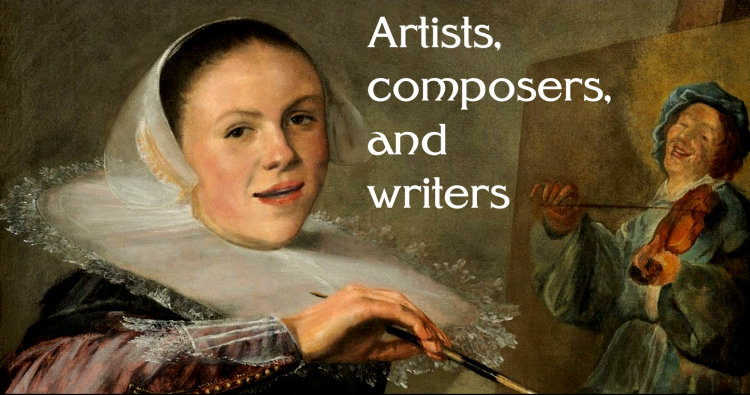11. A Geography of Modernism.
The strips of paintings shown above are respectively by Max Weber (1916), Robert Delaunay (1914), and Wassily Kandinsky (1913),
all abstract or semi-abstract paintings painted at a similar time, and all owing something to Cubism. Apart from the Eiffel
Tower in the Delaunay (which I chose to include), is there anything to make one specifically American, the other French, or
the third German? We talk about "German Expressionism" in a similar period, just as we talked about "French Impressionism" a
generation earlier, but the simple terms "Expressionism" and "Impressionism" apply anywhere, and nobody talks of, say,
"French Cubism." So many of the movements of Modernism, while starting out with specific geographical associations (the
Second Viennese School of Schoenberg, Berg, and Webern, for example), soon became international forces tying their
practitioners more closely to one another than to the country in which they happen to live.
I wrote the above before working on the actual class. Rather than pursuing the paradox whereby even nationalism becomes
international, I have decided to focus on two countries where it is indeed possible to speak of National Identity, with two
decades in each. So German Expressionism in the 1900s is contrasted with the different expression of similar impulses in the
Weimar Republic of the 1930s. And in the second hour, two manifestations of American Art: the Abstract Expressionism of the
1950s and Pop Art in the 1960s. rb.
The script, videos, and images will be posted immediately after class.
Here are brief bios of the artists and poets considered in the class, listed in chronological order of birth.
You can access all biographies via the BIOS link on the syllabus page.
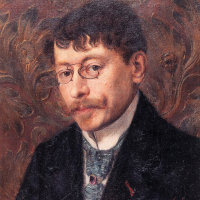 |
Albert Giraud, 1860–1929. Belgian poet.
Giraud (born Emile Albert Kayenbergh) was a Symbolist poet whose principal claim to lasting fame is his Pierrot Lunaire (1884), set to music by Arnold Schoenberg in 1912.
|
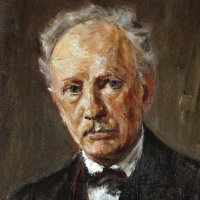 |
Richard Strauss, 1864–1949. German composer.
You might say that Strauss had two careers: as an orchestral composer, and as an opera one. His tone poems in the 1890s such as Don Juan and Till Eulenspiegel brought him immediate fame, but he wrote his last big orchestral work in 1915. Meanwhile his operas Salome (1905) and Elektra (1909) continued his radical Expressionism, but with Der Rosenkavalier (1911), he began a stylistic retreat that continued until his last opera, Capriccio, in 1942.
|
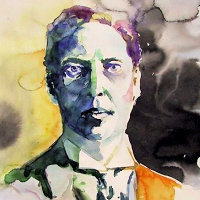 |
Wassily Kandinsky, 1866–1944. Russian-born painter and theorist.
He worked mainly in Germany in the earlier part of his career, where he was a co-founder of the Blaue Reiter school of Expressionism. His paintings, which began in a post-Impressionist or Fauvist style, gradually became more abstract, a development that paralleled the experience of his friend Arnold Schoenberg in music. He returned to Russia during WW1, but then came back to Germany, where he was an influential teacher at the Bauhaus. He became a German citizen in 1927, and a French one shortly before WW2.
|
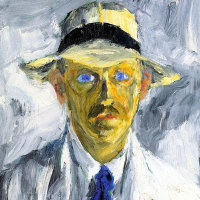 |
Emil Nolde, 1867–1956. Danish-German painter.
Born Hans Emil Hansen, the artist would later take the name of his birthplace, Nolde in Denmark. He studied art mainly privately and in visits to Paris, and later exhibited with both Expressionist groups Die Brücke and Der Blaue Reiter. His art was condemned as "degenerate" by the Nazis, but he nonetheless survived the period by making whatever compromises might have been necessary.
|
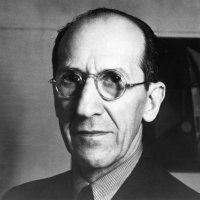 |
Piet Mondrian, 1872–1944. Dutch painter.
After painting in a fairly naturalistic, he went through a rapid development between about 1910 and 1915, moving towards total abstraction, the elimination of curved lines and mixed colors, joining with Theo van Doesburg in 1917 to create the movement De Stijl. He spent his last four years in New York City, where his manner became less monumental and more syncopated, no doubt influenced by the jazz he loved. He was intensely interested in the Theosophical Movement.
|
 |
Robert Wiene, 1873–1938. German director.
A former actor and pioneering director of the German Expressionist silent film, notably with The Cabinet of Dr. Caligari in 1920, Wiene fled Germany in 1933, never to return. He never matched the success of his earlier work.
|
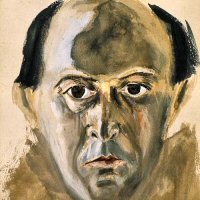 |
Arnold Schoenberg, 1874–1951. Austrian composer and theorist.
Schoenberg is most famous in the history of music as the developer first of atonal music and then of the principle of musical organization known as Serialism. Although he wrote three shorter operas, his masterpiece is Moses und Aron. Although he conceived it in three acts, Schoenberg had only finished two when he emigrated to America in 1934, and it is this version that is usually performed. [Schoenberg was also a painter; this is a self-portrait.]
|
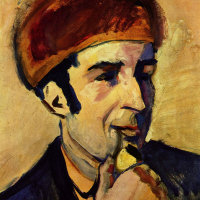 |
Franz Marc, 1880–1916. German painter.
Visits to Paris introduced him to the work of Van Gogh, which nudged his style towards Expressionism, and led to his joining with Macke and Kandinsky in the Blaue Reiter group in 1911. His somewhat mystical disposition led him towards an abstract style depicting the inner lives of animals. He died fighting in WW1.
|
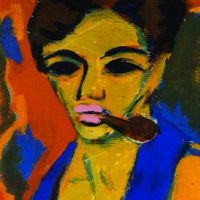 |
Ernst Ludwig Kirchner, 1880–1938. German painter.
Kirchner was the co-founder of the Expressionist group Die Brücke (the bridge) in 1905, and its leading figure, painting incisive angular figures in strong colors. At the outbreak of WW1, he volunteered for service as a driver, but was invalided out due to poor health, both mental and physical. He never fully recovered, and spent the last part of his life in seclusion in Switzerland.
|
 |
Arthur Dove, 1880–1946. American Painter.
Dove, who spent some time in France in the ferment of the first decade of the century, is credited with painting the first abstract pictures in America, although he did not exhibit them at the time.
|
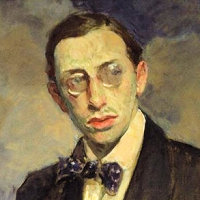 |
Igor Stravinsky, 1882–1971. Russian-American composer.
Starting as an enfant terrible in Paris with the ballets he wrote for Serge Diaghilev, he gradually pared back his resources, developing a neo-classical style between about 1930 and 1955, but eventually turning his back on tonality.
|
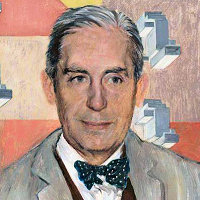 |
Walter Gropius, 1883–1969. German architect.
Though one of the masters of modernist architecture in his own right, Gropius made his principal mark on 20th-century art as founder of the Bauhaus School in Weimar in 1919, attracting a faculty that included leading figures in all branches of art and design, and establishing a pattern of education followed in progressive art schools ever since. He fled Germany in 1934 and eventually became an American citizen.
|
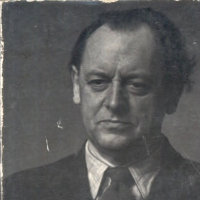 |
Kurt Schwitters, 1887–1948. German artist.
Although best known for his participation in the Dada movement and invention of "MERZ" (the middle syllable of "Kommerzbank") or collages created out of trash, Schwitters was also a sculptor, poet, dancer, and composer. He fled Germany in 1937 and found refuge in England.
|
 |
Hanna Höch, 1889–1978. German artist.
Höch was a leading Dada artist and one of the inventors of photomontage. Much of her work had a political or social agenda, and often concerned the changing roles of women during the interwar era.
|
 |
Otto Dix, 1891–1969. German painter.
After service in the First World War, recorded in some of his most savage paintings, Dix became a critical commentator on social conditions in the Weimar Republic.
|
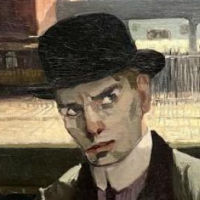 |
Stuart Davis, 1892–1964. American painter.
Beginning as a realist in the "Ashcan School" style, Davis was one of the youngest artists to exhibit at the Armory Show of 1913, which in turn exposed him to contemporary European art. The experience turned him into a committed Modernist. One of the first abstract painters in America, he made a reputation especially for his jazz-influenced work of his later years.
|
 |
Bertolt Brecht, 1898–1956. German dramatist.
Brecht's importance to opera rests mainly on his collaborations with Kurt Weill between 1928 and 1932: The Threepenny Opera, Happy End, Mahagonny, and The Seven Deadly Sins. A Communist, he fled the Nazi régime, but returned after the War to found the celebrated Berliner Ensemble in East Berlin.
|
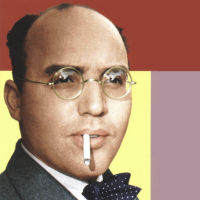 |
Kurt Weill, 1900–50. German American composer.
Weill became famous in Berlin for his collaborations with Bertolt Brecht, among them The Threepenny Opera (1928, a satirical adaptation of John Gay's The Beggar's Opera, see above) and the political opera The Rise and Fall of the City of Mahagonny (1930). Fleeing Nazi Germany, he eventually settled in New York in 1935, finding new fame on Broadway, but also writing more operatic fare such as Street Scene (1946, with Langston Hughes).
|
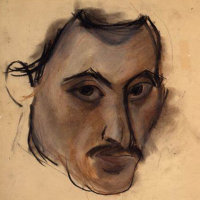 |
Arshile Gorky, 1904–48. Armenian-American painter.
After the death of his mother, both fleeing from the Armenian genocide, Gorky came to the US in 1920, where he was briefly reunited with his father. Influenced by Postimpressionism and European Surrealist abstraction, he became a crucial link between European avant-garde and American Abstract Expressionism.
|
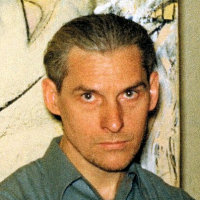 |
Willem de Kooning, 1904–97. Dutch-American painter.
Born in Holland, de Kooning came to America as a stowaway in 1926, became an American citizen in 1961. By this time, he was already celebrated as a leading figure in the Abstract Expressionist movement. His paint handling was just about as active as Jackson Pollock's, and his color sense more exuberant, but he never completely abandoned figurative subjects, such as in his series of Women (1953).
|
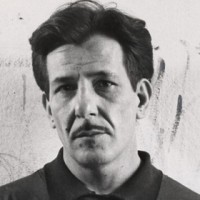 |
Franz Kline, 1910–62. American painter.
Kline began as a figurative painter and illustrator, but found his characteristic style in the late 1940s. It is said this came from a suggestion by De Kooning that he project his drawings onto the wall of his studio, to the point where the individual brushstroke became the subject, not the object represented. But although Kline's paintings may seem improvised in handling, they were in face carefully planned out through numerous sketches.
|
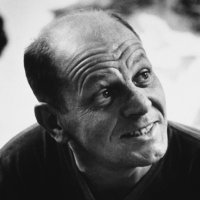 |
Jackson Pollock, 1912–56. American painter.
For many people, Jackson Pollock's "drip paintings," created by pouring paint directly onto raw canvas attached to the studio floor, are the defining image of Abstract Expressionism, and certainly the source of the alternative description, "Action Painting." But Pollock, who was born in Wyoming, studied with Thomas Hart Benson, and worked in the WPA project of the 1930s, reached this style only through a long process of moving through a kind of semi-abstract surrealism.
|
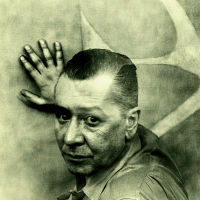 |
William Baziotes, 1912–63. American painter.
Baziotes was born in Pittsburgh to Greek parents, and studied art in New York. He became friends with many of the Abstract Expressionist painters, but his own work is equally influenced by the European Surrealism of Miró and Arp, featuring an interplay of biomorphic shapes on an indeterminate ground.
|
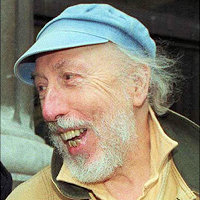 |
Richard Hamilton, 1922–2011. English artist.
Discovering his ability as an technical draughtsman, Hamilton turned to art in his twenties, and soon became one of the leading figures in postwar British art. His collage Just what is it that makes today's homes so different, so appealing?, produced for the 1956 exhibition This Is Tomorrow, is considered one of the first creations of Pop Art anywhere.
|
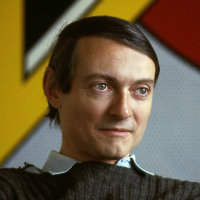 |
Roy Lichtenstein, 1923–97. American painter.
Lichtenstein's large-scale blow-ups of images from cartoon romances became one of the defining memes of American Pop Art. He described them as "industrial painting," thus erasing the distinction between fine and commercial art. Later, he began to apply his unmistakable style to reworking classic paintings, such as Van Gogh's Bedroom at Arles.
|
 |
Eduardo Paolozzi, 1924–2005. Scottish sculptor.
The son of Italian immigrants, Paolozzi studied in Edinburgh, at the Slade School in London, and later in Paris. He was knighted by Queen Elizabeth mainly in recognition of his many public works, but he is equally important in the history of art as the creator of the first collages of scraps from American magazines, taken as the start of the Pop Art movement.
|
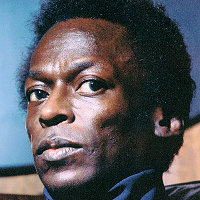 |
Miles Davis, 1926–91. American musician.
A trumpeter, bandleader, and composer, Davis had a career in jazz spanning five decades and numerous different styles. After playing with Charlie Parker 1944–48, he struck out on his own, leading groups that included such players as John Coltrane and Herbie Hancock. His Kind of Blue album of 1959 was performed almost entirely without written music, and became one of the best-selling jazz records of all time.
|
 |
Helen Frankenthaler, 1928–2011. American painter.
A second-generation Abstract Expressionist, she was the first to develop the technique of pouring thin paint onto unprimed canvas, greatly influencing several of her better-known contemporaries.
|
 |
Andy Warhol, 1928–87. American multi-media artist.
Warhol (born Andrew Warhola Jr.) worked in many media beside painting, including silk-screen printing, sculpture, and film. Many of his images, such as those of Campbell soup cans, were not only taken from industrial sources, but reproduced multiple times by industrial methods. His studio, which he called The Factory, became the nerve center of American Pop Art.
|
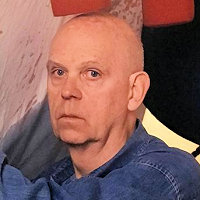 |
Claes Oldenburg, 1929–2022. Swedish-American sculptor.
Oldenburg moved with his family to Chicago in 1936, when his father was appointed Swedish Consul. He studied at Yale and later the Art Institute of Chicago before moving to New York in 1956. Participating in "happenings" and creating soft, painted plaster, or greatly enlarged versions of everyday objects, he became a leading artist of the Pop movement. Unlike many of his contemporaries, he continued a high-profile career right up to his death, making huge public sculptures in collaboration with his wife, Coosje van Bruggen.
|
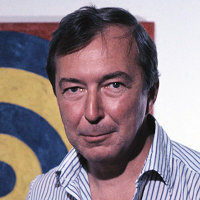 |
Jasper Johns, 1930– . American painter.
Johns' adoption of the images such as maps, targets, and the American flag was originally a way of anchoring a very active Abstract Expressionist technique to subjects that were not abstract at all, but it paved the way for later artists to treat the commonplace object as a thing-in-itself, one of the key concepts of Pop Art. He was closely associated with the painter Robert Rauschenberg, the composer John Cage, and the choreographer Merce Cunningham.
|
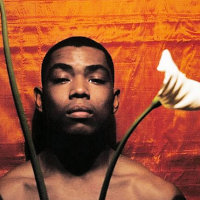 |
Alvin Ailey, 1931–89. American choreographer.
Born into poverty in Depression-era Texas, Ailey nonetheless established himself as one of the leading Black dancers in America, performing with May Angelou, Lester Horton, George Balanchine, and on Broadway. He founded the Alvin Ailey American Dance Theatre in 1958 to give a dance presence to Black experience, and choreographed Revelations, his signature work, in 1960.
|
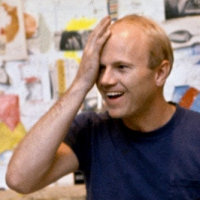 |
James Rosenquist, 1933–2017. American painter.
"Drawing from his background working in sign painting, Rosenquist's pieces often explored the role of advertising and consumer culture in art and society, utilizing techniques he learned making commercial art to depict popular cultural icons and mundane everyday objects." [Wikipedia] His gigantic F-111 (1964–65) occupies an entire room in the Museum of Modern Art in New York.
|
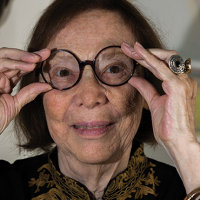 |
Grace Schulman, 1935– . American poet.
For 34 years, Schulman was poetry editor of The Nation. She is also a winner of the 2016 Frost Medal for Distinguished Lifetime Achievement in American Poetry, awarded by the Poetry Society of America, and a member of the American Academy of Arts and Letters.
|
